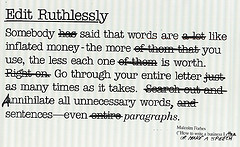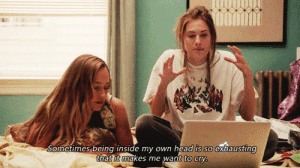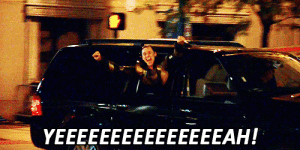Photo Credit: The Romantic Editor
Before I get started, if you’re trying to decide which idea to write next, check out this post I wrote over at the MiGs on how to develop your ideas.
I’ve been doing a series on the editorial process of what happens to a book after it’s been acquired by the publisher. Today I’m going to talk about Line Edits. Once a writer has turned in their revision of their manuscript based on the editorial letter, their editor will in turn send them line edits. This could be in digital or handwritten form.
Mine were given in digital form. Using track changes, my editor marked out words, suggested changes to sentences, added in proper punctuation, and made comments suggesting ways to strengthen a particular line or paragraph.
In this edit, my editor and I were no longer looking at the big picture of the book like we did with the editorial letter. Now we were scrutinizing the sentence structure, word choice, and how to make the structure of the book stronger and smoother. She gave me the option to accept her changes or write a comment on why I wanted to keep this as it was.
I appreciated my editor’s comments because not only were they extremely helpful, but I didn’t feel as if she were ripping my book apart or was telling me I had made stupid mistakes (I had a couple of those *dies*).
Instead, I felt she was committed to making my book shine. This was huge for me as a writer.
*A good editor will never take your ‘voice’ from your manuscript, just develop it.*
Tips to keep in mind when working on your edits:
- Your editor bought your book because he/she loves it. Remember this.
- Read through the whole manuscript first to get the big picture of what your editor is looking for in this revision.
- Go ahead and accept all the changes that you agree with.
- Think through your editor’s suggestions. If you don’t agree with them, take your time to really make sure of your reasons and why.
- Some of your line edits will ask you to explain a character or strengthen a segment of dialogue. Be wary of the quick fix. Think about how you can make the characters stronger by your changes.
Here’s an example:
In my initial draft for GILDED, I wrote:
Then Dad holds my face between his hands, staring at me with such intensity. “At least you are safe. I couldn’t bear losing you, too.”
My editor’s comment was: Do you think he’s also talking about Grandfather here? It could work both ways!
Hmm… that’s a good point! So I reworked the paragraph to this:
“Not everything,” Dad says. “The two of you are safe. That’s what matters.” Then he holds my face between his hands, staring at me with such intensity. “I couldn’t bear losing you, too.”
The most important part of the line edit is to remember it’s one more step to making your manuscript an even stronger story, and more enjoyable for your readers so they feel like this:
And of course, if it gets too tough, I recommend a healthy dose of dark chocolate.
More on the Publishing Process:
You can go here for an explanation of the editorial letter.
Here for how to deal with an editorial letter.
Here to look at the editorial letter from the editor’s point of view.
And here for advice on the editorial letter from other writers.





Oooh, I love this: *A good editor will never take your ‘voice’ from your manuscript, just develop it.*
That’s exactly what I think my editor does. Great post!
Thank you!
It’s funny to find myself straying from the norm of the editorial process. Regardless, chocolate is my friend 😉
That’s actually a good point. This is a general overview, but I’m sure there are other ways about the process and each person’s journey is so different!
But chocolate is universal, isn’t it? 🙂
It’s good to remember that the editor bought the book because they liked it. But I’d definitely have to have some chocolate on hand. 🙂
Fantastic, Christina. And I concur with the inflated money/verbosity analogy in the insert.
Line editing, and typos specifically, may be the weakest link in my writing-chain. Wish I had a superb line-editor in my immediate family, or better yet, a built-in one.
Yes, agreed. My vice is commas.
Great post on line edits.
I would rather deal with Word and track changes than the old-fashioned way. I have several cheat sheets for all those marks, but can’t remember them all.
Medeia- I know. Track changes is awesome. Love them!
This was just what I needed to read since I’m editing at this time. Thank you!
I love line edits! That may be strange, but they’re usually a tad bit easier, and I realize all over again that I’m incapable of ever putting a comma in the right spot (which is less fun, but really helpful…especially if I could remember what I learn :).
No, I think you are right. But then I’ll have some sentences that I’ll just agonize over.
I love this part of the editing process. It really does make you manuscript shine. 🙂
You are so right. It becomes all pretty and shiny.
I love this series about the editing process, Christina. I’m learning tons for when I get to that point. 😀
Yay! I’m glad.
Yay! Awesome post, Christina!
Thanks! It’s been fun putting my journey into these blog posts.